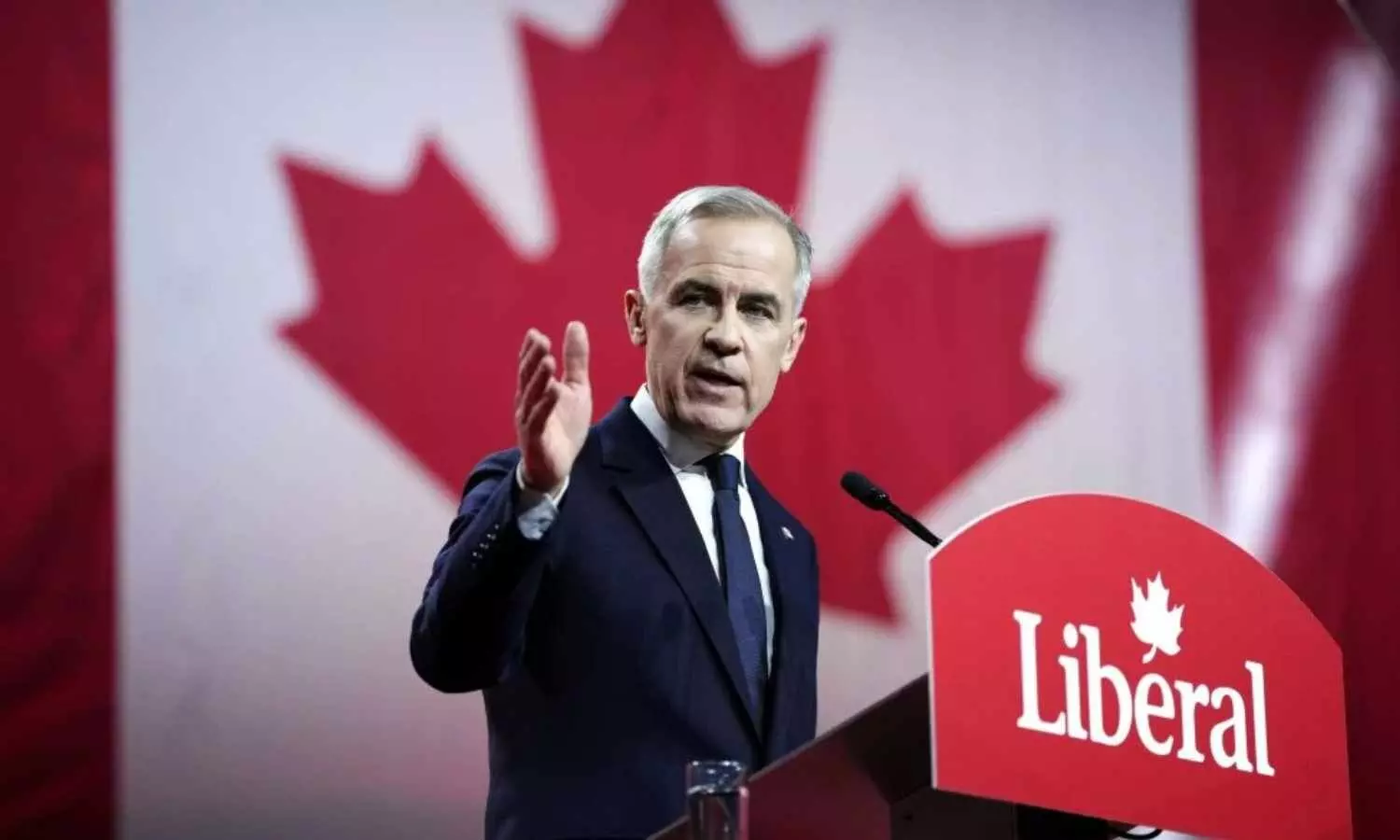Liberal Party Clinches Canada Polls as US-Canada Rift Deepens
Canada’s Liberal Party wins federal election under Mark Carney, amid growing U.S. trade tensions and annexation threats from President Donald Trump.
image for illustrative purpose

The Liberal Party of Canada, under the leadership of Prime Minister Mark Carney, emerged victorious in the federal elections held Monday, a result shaped heavily by ongoing tensions with the United States and domestic political shifts. Early projections indicated the Liberals secured the largest share of the 343 parliamentary seats, though final counts remained uncertain regarding a majority outcome.
In a speech delivered late Monday in Ottawa, Carney emphasized unity and national resolve, framing the electoral outcome as a direct response to threats from U.S. President Donald Trump. “The longstanding partnership we once shared with America is over,” Carney said. “We have absorbed the blow of their betrayal. What remains is the lesson we carry forward.”
Carney accused Trump of attempting to destabilize Canada through aggressive trade policies and rhetoric hinting at territorial ambitions. “This is not alarmism,” he told supporters. “Trump wants control over our resources, our sovereignty, our nation. But we are united. And we will resist.”
As vote tallies came in through the night, media outlets including CBC and CTV projected a Liberal-led government. Whether Carney's party will govern with an outright majority or form a minority administration remains to be confirmed. A majority requires 172 seats.
The Conservative Party, led by Pierre Poilievre, is projected to take nearly 150 seats. In a public statement, Poilievre conceded the election while noting the Liberals may not have secured enough seats to govern alone. “Canada appears to have chosen a minority outcome,” he said. Poilievre, trailing by over 2,000 votes in his own Carleton riding, pledged to lead a vigilant opposition.
New Democratic Party (NDP) leader Jagmeet Singh also conceded defeat in his riding and announced his resignation as party chief. The NDP’s vote share fell significantly compared to previous elections, and Singh acknowledged the shifting political landscape.
Carney’s remarks reflected a hardened stance on the country’s relationship with its southern neighbor. “We are entering a different era,” he said. “One where Canadian interests must be defended with greater independence.” Carney promised support for domestic industries and workers affected by the ongoing U.S.-Canada trade war, and signaled a willingness to explore broader global partnerships.
Following the election results, the Chinese foreign ministry expressed openness to strengthening bilateral ties. “China is prepared to develop relations with Canada on the basis of mutual respect and benefit,” said spokesperson Guo Jiakun.
British Prime Minister Keir Starmer also congratulated Carney, expressing hope for deeper cooperation between Canada and the United Kingdom. “Canada and the UK share a long-standing alliance rooted in common history and values,” he said.
Carney’s ascent to the premiership remains historic. A former governor of the Bank of Canada and Bank of England, Carney entered electoral politics without prior parliamentary experience. Winning his first race from the Nepean riding by a margin of over 4,000 votes, Carney’s victory marked a rare transition from central banker to national leader.
Known for his crisis management credentials, Carney leaned heavily on his economic background during the campaign. Voters facing rising costs and uncertainty responded to his message of stability and strategic leadership amid external threats.
Should the Liberals fall short of a majority, Carney will need support from smaller parties to pass legislation. The NDP has previously worked with the Liberals under former PM Justin Trudeau in a confidence-and-supply arrangement, exchanging support for policy concessions. However, Singh’s departure and the NDP’s weaker position may complicate future collaboration.
The Bloc Quebecois remains a possible swing partner, though its separatist agenda poses political risks for the federal government. Formal coalitions are uncommon in Canadian federal politics, especially outside wartime contexts.
Several ridings, including Burnaby Central in British Columbia, Aurora–Oak Ridges–Richmond Hill in Ontario, and Trois-Rivières in Quebec, were pivotal in shaping the national outcome. In Alberta, long a Conservative stronghold, former Liberal cabinet member Amarjeet Sohi ran competitively, suggesting a potential Liberal resurgence in western Canada.
Atlantic Canada, with its early reporting ridings, indicated shifting allegiances that initially favored the Liberals, setting the tone for the night’s trend.
The 2025 Canadian federal election unfolded under the shadow of U.S. hostility, highlighted by Trump’s online remarks implying Canada should be annexed. His social media comments, alongside economic pressures from tariffs and border threats, fueled political anxieties among Canadian voters.
Adding to the election day tension was a violent incident at a Vancouver street fair over the weekend, prompting a temporary suspension of campaigning. Authorities confirmed the attack was not terror-related.
The next session of Parliament is scheduled to begin on May 26, by which time Carney is expected to present a cabinet and outline his legislative agenda. A Throne Speech will test the new government’s ability to command the confidence of the House.

